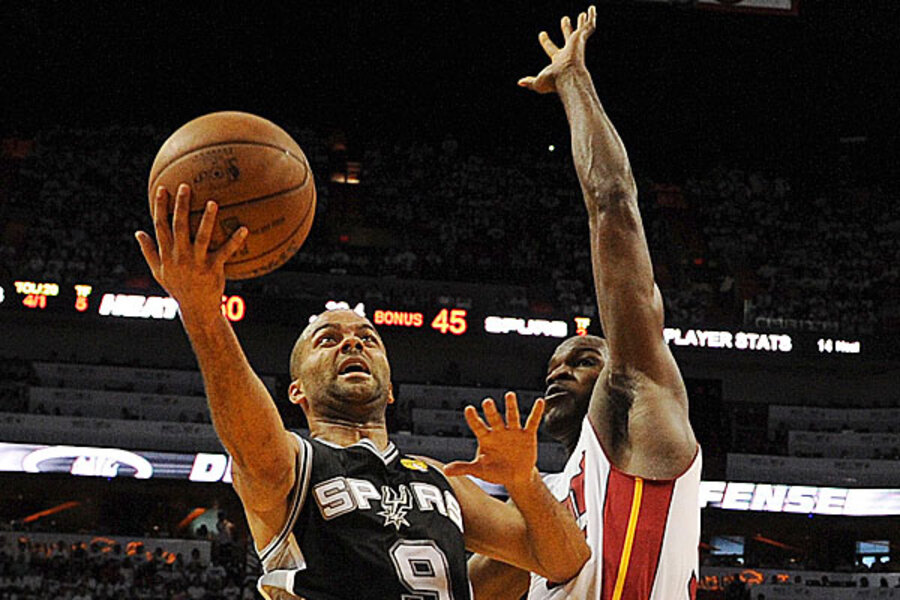Tony Parker's last-second heroics lift Spurs over Heat
Loading...
| Boston
Tony Parker’s acrobatic shot under the outstretched arms of LeBron James with 5.2 seconds remaining powered the visiting San Antonio Spurs to a 92-88 victory over the Miami Heat in game one of the 2013 NBA Finals Thursday night at Miami’s American Airlines Arena.
Parker’s high-arcing shot off the glass was checked by officials to make sure that he beat the 24-second shot clock, which expired just after the ball left Parker’s hands. San Antonio, which had trailed for most of the game, got 10 points from Parker in the fourth quarter – only six fewer than the entire Heat team scored in the same period. Parker led all scorers with 21 points (along with 6 assists), followed closely behind by teammate Tim Duncan, who had 20 points and 14 rebounds.
San Antonio played a veteran game in many ways, committing only four turnovers – half of Miami’s very respectable eight – and a total of 12 personal fouls. The Spurs also hit 83 percent of their free throws, as opposed to the Heat’s 70 percent. And in addition to Parker and Duncan, the Spurs got double-digit scoring from Manu Ginobili (13 points) and Danny Green, who hit four 3-pointers for 12 points – though San Antonio as a team was a mediocre 7-23 from behind the arc.
Miami got strong performances from LeBron James, who had his third career triple-double in NBA Finals play, with 18 points, 18 rebounds, and 10 assists, while Dwyane Wade, who was 7-15 from the floor to finish with 17 points. Chris Bosh and Ray Allen each posted 13 points for the Heat – with Allen hitting three 3-pointers, and Bosh adding 5 rebounds.
But this game was one of shifting momentum in the latter minutes. With the Heat leading the entire way (and 52-49 at the half), the Spurs went ahead with 7:39 left in the fourth with a jump shot by Kawhi Leonard, which made the score 79-78 with 7 minutes remaining. And largely due to Parker’s attack of the basket in the fourth period, San Antonio won the points in the paint, 40-34. Additionally, Miami’s eight turnovers led to 15 points, whereas San Antonio’s four miscues only resulted in 8 points.
The biggest problem Miami faced all evening – and one they will need to address as the series progresses – is how to guard Parker. He can beat teams on the perimeter with both shots and assists, and has fluid motion in the lane off the pick-and-roll, which confounded guards Mario Chalmers and Norris Cole all of Game One.
And Miami has to find answers going inside themselves against the Spurs’ Duncan, Boris Diaw, and Danny Green, who combined for 21 rebounds and 5 blocked Heat shots last night. Lastly, the Spurs do not wilt in other teams’ houses. They are 7-1 on the road, and 13-2 overall in the playoffs. And in connection with that statistic, the team that wins the first game of an NBA Finals series wins just over 71 percent of the time. The 2-3-2 game format, which, as James remarked after last night’s game “It is what it is,” is another potential pitfall for Miami.





